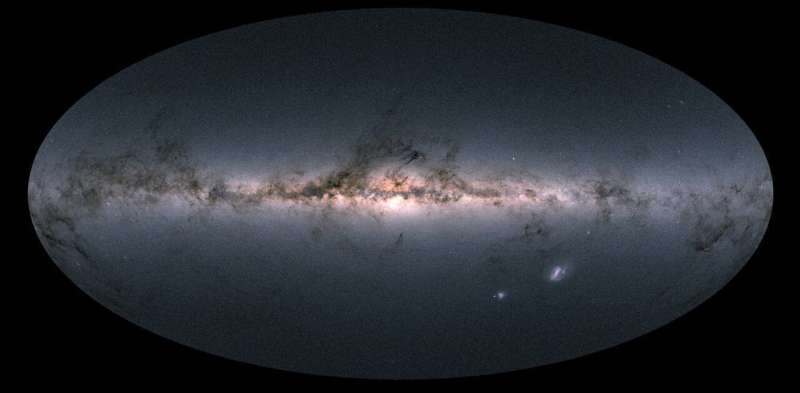This article has been reviewed according to Science X's editorial process and policies. Editors have highlighted the following attributes while ensuring the content's credibility:
fact-checked
trusted source
written by researcher(s)
proofread
Floating crystals slow stellar aging. For some stars, this can delay death by billions of years

Imagine the embers of a campfire, slowly dimming over time. That is the fate most stars in the universe face. After their nuclear fuel is spent, 98 percent of stars—including our sun—will eventually become white dwarfs. These small, dense remnants are thought to simply cool down, becoming ever fainter as the universe ages.
In 2019, astronomers discovered a group of white dwarfs that mysteriously stopped cooling. These "forever-young" stars remain at a near-constant surface temperature for at least eight billion years—an incredible length of time, considering the universe is 13.8 billion years old.
Something is fueling these stars from within, but given that they had run out of their nuclear fuel source, scientists were unsure what could be keeping them shining so brightly. Our research, recently published in Nature, presents the solution to this conundrum.
Using information gathered by the Gaia space observatory of the European Space Agency, researchers discovered that some white dwarfs essentially stop cooling.
By studying how white dwarfs are distributed as a function of temperature (from hot to cold) in the Gaia data, astronomers noticed an accumulation of white dwarfs at intermediate temperatures. This indicates that some white dwarfs spend more time at these intermediate temperatures—eight billion years more than thought possible.
Stellar crystals
White dwarfs are weird. A mere teaspoon of material from their cores weighs several tons. Under such extreme densities, matter can behave strangely. Even though the interiors of white dwarfs are millions of degrees hot, the density is high enough that they can freeze into a solid state. They form crystals out of the carbon, oxygen and other elements present in their interiors.
The formation of these crystals normally starts at the center of the star, where density is highest. As the white dwarf cools down, more crystals are formed in successive layers until almost the whole star is completely solid.
However, this inside-out crystallization does not apply to all white dwarfs. We discovered that the heaviest elements present in white dwarfs are expelled from the crystals as they are formed, just as salt is expelled from ice crystals when seawater freezes.
The crystals become less dense than their surroundings, and float up like ice cubes in a glass of water. As the crystals do not stay in place, the core cannot simply freeze from the inside out.
The movements created by the floating crystals reshuffle the chemical layering inside the star. Gradually, the heaviest elements are transported toward the center. This releases a steady flow of gravitational energy that keeps the star shining at a near-constant temperature for billions of years.
Floating crystals can pause the stellar aging process, providing a final energy source to otherwise dead stars.
The exception or the rule?
So far, this cooling pause has been conclusively identified only for a small fraction of the white dwarf population. The high masses and peculiar compositions of these anomalous white dwarfs suggest that they had quite violent histories. Most likely, they are the products of stellar mergers—events where two stars collide and combine.
But this may be just the tip of the iceberg. Based on our findings, we suspect that almost all white dwarfs, and not just the merged ones, experience some cooling pause during their evolution. However, this more universal cooling pause would be much shorter than the multi-billion-year interruption studied so far.
Observations are ongoing to try to identify this shorter cooling pause in the rest of the white dwarf population.
Cosmic clocks
These findings have implications for stellar archaeology. The cooler the white dwarf, the older it must be. Just as archaeologists use carbon-14 dating to determine the age of artifacts and reconstruct the history of a city or civilization, astronomers rely on white dwarf cooling to measure the ages of stars and understand the history of our Milky Way galaxy.
Our discovery makes this more complicated. A white dwarf with a certain temperature could be billions of years older than initially assumed because of the formation of these floating crystals. The key now is to figure out which stars experience this cooling pause and which do not.
Provided by The Conversation
This article is republished from The Conversation under a Creative Commons license. Read the original article.![]()





















